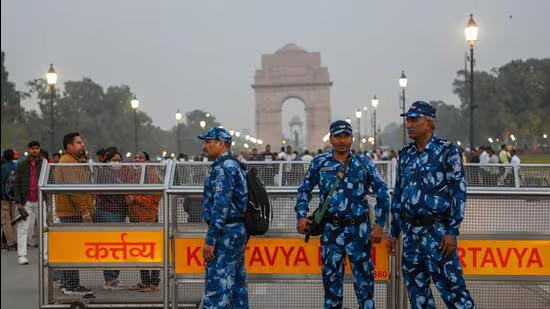November 18, 2025 : Interrogation of the accomplices of Red Fort suicide bomber Dr Umar un Nabi has revealed that the Pulwama-Faridabad self-radicalized Islamist terror module was meticulously planning an attack in India for at least three years.
HT learns that Nabi along with fellow doctors Muzamil Shakeel and Adeel Ahmad Rather were in touch with a man named Abu Aqasha through Telegram and met two Islamists—identified only as Mohammed and Omar—in Turkey in 2022. While the three names appear to be generic for Islamists, people familiar with the investigation confirm that the three Pulwama doctors wanted to go to Afghanistan in pursuit of their imagined sense of Muslim victimhood and to support pan-Islamic causes. The exercise is now on to identify the three Islamists behind the generic names, the people add.
While intelligence agencies are yet to confirm any Pakistani or Jaish-e-Mohammed connection with the suicide bombing, the worrying factor is that the terrorists seem to have figured out a mix of incendiary chemical and ammonium nitrate that lowers the kindling temperature of the improvised explosive device fabricated by this terror module. It is perhaps for this reason that the seized explosive exploded in the Nowgam police station during sampling by the forensic experts, the people said. Nine people, including security personnel died in the accidental blast.
The biggest worry of Indian intelligence agencies post-Red Fort blast is that while electronic intelligence can red flag cross-border terror activity, local terror modules with home grown jihadists hardly have any electronic imprint and are hence very difficult unearth. The arrest of a Hyderabad medical representative by Gujarat ATS this month for trying to cook up Ricin under instructions of Pakistan deep state, masquerading as Islamic State Khorasan Province (ISKP) terrorists, was possible only due to cross-border electronic intercepts. There were none such in this case.
Although NIA with support of other Indian intelligence agencies is working to unravel the Red Fort bombing conspiracy, the larger security threat is the number of young Muslims being radicalized through social media and targeted propaganda by the pan-Islamic terror groups. The road to radicalization involves pushing a sense of Muslim victimhood using doctored images from conflicts all over the world. Although the government, enforcement and intelligence agencies have been countering Islamic radicalization, the only sure-fire way of de-radicalization involves fact-checking propaganda by Islamists and ensuring that they do not feel bothered by the majority community.
The Red Fort bombing, officials in the intelligence and security establishment concur, has made it imperative for Indian security agencies to focus their efforts on unearthing and uprooting terror modules all over the country. The focus will of course remain the Kashmir valley as decades of Islamic radicalization by Pakistan and its proxies has touched many, but it is also important to look at the hinterland.
Summary:
Authorities revealed that preparations for the Red Fort attack spanned three years, indicating long-term planning by perpetrators and prompting heightened security and investigative measures nationwide.


